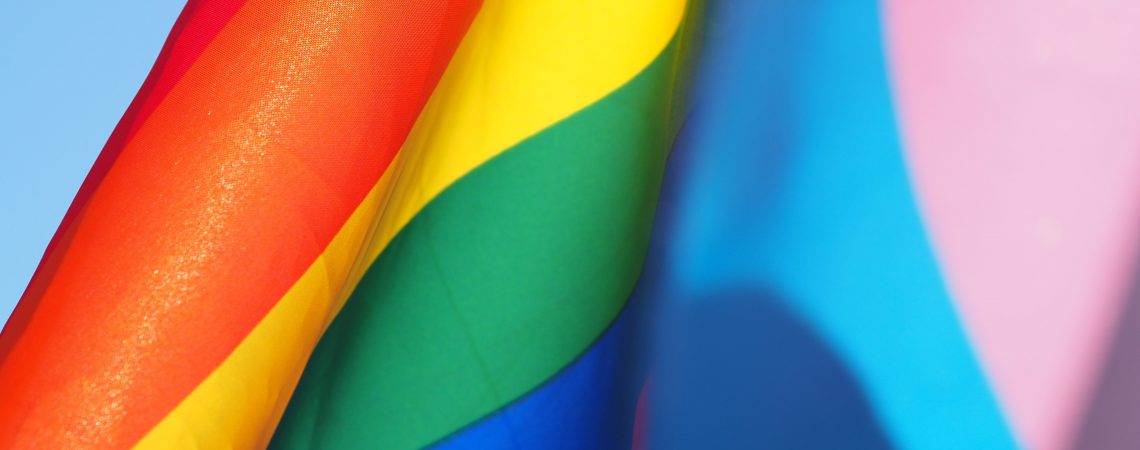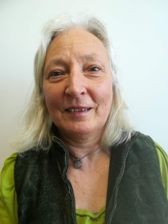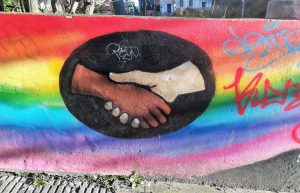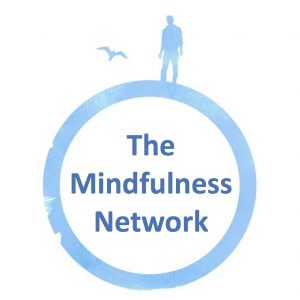
– written by Sheila Roche

I am really glad, reading the other contributions to this blog, that the Mindfulness Network is committed in such a personal way to developing Equality, Diversity and Inclusion (EDI) policies.
I am a cisgendered* lesbian and a long-term dharma practitioner. As such, I have facilitated an LGBTQ+ meditation group in Brighton since the early 2000’s. I have also trained at Bangor University as a mindfulness teacher, following the Teacher Training Pathway, and attended at least three wonderful training retreats at Trigonos. I use my teaching skills in Brighton with LGBTQ+ projects like MindOut, and the Terrence Higgens Trust.
All good, and yet this seemingly straightforward story is not at all straightforward. To say “I am a lesbian,” (or any of the other identities in the acronym, e.g. gay, bi-sexual, trans, queer, unsure, intersex, etc) is to come out. I have no idea what reactions may be triggered.
I can say this publicly now, these seemingly easy words on a page, but through all my mindfulness training at Bangor, I didn’t publicly come out. I didn’t lie about my life, but looking back I realise that I didn’t feel able to claim this identity, or to trust in the outcome.
At that time, which was around 10 years ago, I felt an outsider. In fact, this was my first foray back into the world of universities and professionals, after many years outside this milieu. I was a bit in awe of these people who seemed comfortable in what I perceived as a professional, middle-class/ heterosexual/ mentally stable/ able bodied environment. (A lot of assumptions there, I grant).
Life had punched quite a few holes in my path. I suffered a number of mental health crises due to coping with coming from a traditional Irish family, and creating my own life in a new world. When I first heard that wonderful phrase of Mary Oliver’s, “let the soft animal of your body love what it loves,” I was filled with grief, rage, self-hatred, envy and, the first word which came to mind: horror. “Why can’t I do that?!”

So yes, I felt shame and certainly didn’t feel I could stand up as a representative of my LGBTQ+ community. I now recognise all the assumptions I was making, but it would have needed very visible signs that ‘this is an LGBTQ+ safe space’ to have made it possible for me to fully come out in my training.
Would this have made a difference? Yes, it would have meant that I could have brought the fullness of myself to the situation, with all the uniqueness of my experiences, including the damage. This might have helped me and others engage with all of our uniqueness and diversity, and help inform the teaching of mindfulness, making it more trauma aware, for instance. This is happening now, but I was living it then.
Coming Out can be, and is, a dangerous business. Many people experience violence, rejection and public shows of hatred. As a result, LGBTQ+ people experience significantly higher than average levels of mental health problems, including suicidality, than the general population, with the levels for Trans people even greater than this.
Even within Dharma circles, it is not always comfortable to come out. The traditional cultural backgrounds of some sanghas are often anti-gay and anti- sexual expression at worst, and at best completely blind to my life experience.
This was the motivation for setting up our LGBTQ+ meditation group in Brighton. Having a separate space in a local Buddhist umbrella organisation, BodhiTree Brighton, has, however, not gone unquestioned. “Why do you need a separate space?”, “Are you not being exclusionary?”, “Isn’t Brighton gay enough, and safe enough, for you?”, “It’s not compatible with Dharma practice as it focuses on self-identity and difference?”, “What do you Do in your group?!”
Here are some comments from our group members as to why the group matters to them: “I can just be in this group, not having to come out”; “Only in an LGBTQ+ space does it not matter who I am. I can relax”; “When I came to this group it was like I could take off a heavy rucksack”; “We shouldn’t need to justify having a separate space”; “We share teachings that are relevant to our lives, and our ancestry”; “The group provides a gateway to meditation and mindfulness for people who might otherwise feel excluded”; “At a time of great grief and pain, I needed somewhere safe as a lesbian with no previous meditation experience, and found lasting support. I now have a regular meditation practice and have ventured into the wider world of Buddhism in many ways.”
For me, equality, inclusion and diversity are all about making the world bigger, brighter and more compassionate; making visible the lives of those who live courageously with difference; and learning from all who struggle to feel free to be who they truly are.
Lama Rod Owens speaks of ‘disrupting the Binary’, this world which accepts it is defined by dichotomies of straight/gay, male/female, black/white, cis/trans, enlightened/unenlightened. He acknowledges that relating to complexity is not always going to be comfortable. And for me, I welcome that, as it opens the gate to being fully, beyond boundaries, in all our dazzling particularities.
How can mindfulness teachers be more supportive of inclusivity and diversity? Many ways, but for a start I suggest we can help by making the reality of diversity more accepted and visible (an example is use of rainbow badges by hospital staff to indicate this is an LGBTQ+ safe space); to become informed about the particular experience and quality of lives lived outside the norm; and open up to be challenged by this diversity!
*Cisgender is a term for people whose gender identity matches the sex that they were assigned at birth.
References and links:
Brighton LGBTQ+ meditation group www.bodhitreebrighton.org.uk
Angel Kyodo Williams, Lama Rod Owens with Jasmine Syedullah (2016) Radical Dharma: Talking Race, Love and Liberation North Atlantic Books
Larry Yang (2017) Awakening Together: The Spiritual Practice of Inclusivity and Community Wisdom Books
LGB&T Mental Health Resources The National LGB&T Partnership 2016 https://nationallgbtpartnership.org/publications/lgbt-mental-health-resources
Mind (2017), Lesbian, gay, bisexual, trans and queer – Good Practice Guide: Guidance for service providers on how to develop LGBTQ+ affirmative practices. Developed in partnership with MindOut.
MindOut, Brighton LGBTQ+ Mental Health Project www.mindout.org.uk
National LGBT Survey, Gov UK 2018 https://www.gov.uk/government/publications/national-lgbtsurvey-summary-report
Sabah Choudry (GIRES), Inclusivity: Supporting BAME [black, Asian, minority ethnic) trans people. It aims to help you find answers to questions such as: Why are there no or few BAME trans people in my group? How can I support a BAME trans person who attends my group? http://bit.ly/BAMEinclusivity
Stonewall, Inclusive Policy Toolkit, A four-part guide for ensuring your employee policies are fully LGBT inclusive https://www.stonewall.org.uk/inclusive-policy-toolkit
Switchboard Health & Inclusion PRoject (HIP), LGBTQI+ People of Faith: Prejudice and Community Cohesion in Brighton and Hove: Engagement Report, Jan 2019, www.switchboard.org.uk
Watch me Exist: A Transgender Short Film (2019) https://www.facebook.com/MyGenderation/videos/242505793302497/UzpfSTE2NDE3NjMzOTYwNjA1MjI6MjI3ODg4MDc2MjM0ODc3OQ/
About Sheila
Sheila Roche facilitates the Brighton LGBTQ+ Meditation Group, is a trained mindfulness teacher, and has practised Dharma since the late 1980’s in both the Theravadan, and more recently, the Tibetan traditions.





One comment on “An Inside view of LGBTQ+ Inclusion (by Sheila Roche)”
Rosalie
April 5, 2019 at 12:26 pmThank you for writing this blog Sheila. Your suggestions around actively cultivating inclusive environments within mindfulness, and elsewhere, is so important. I admire your courage in writing the post, the willingness to be vulnerable in the service of a greater cause. Thank you so much. This is a great gift.